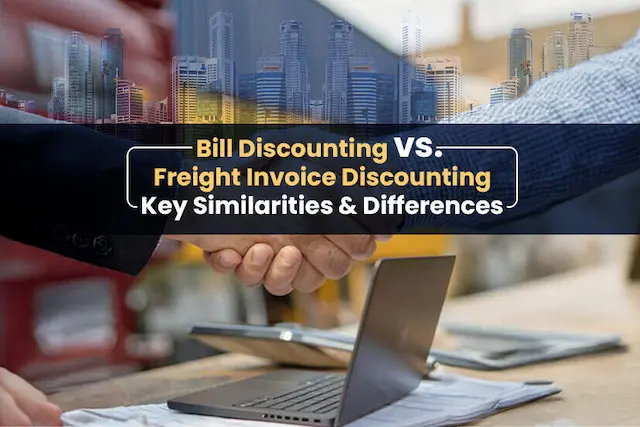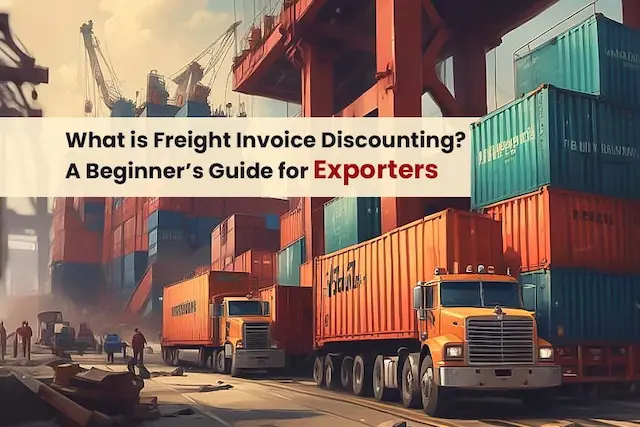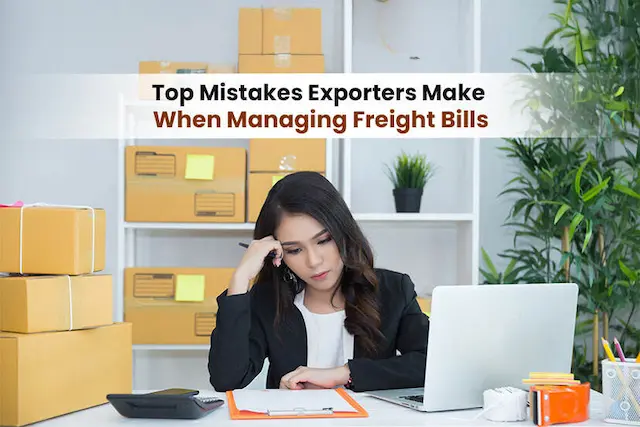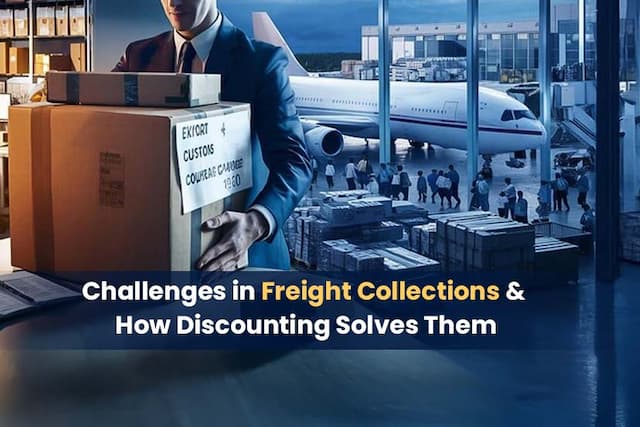A fumigation certificate serves as proof that all wooden components of a shipment, such as crates and pallets, have undergone chemical disinfection. This process, also referred to as pest control, effectively eliminates any pests that may be harbored within the wooden materials.
By obtaining a fumigation certificate, shippers demonstrate their compliance with international regulations aimed at preventing the spread of pests and diseases through trade. Essentially, it assures recipients that the wooden contents of the cargo have been treated to mitigate the risk of pest infestation during transit.
Why is a Fumigation Certificate Needed?
A fumigation certificate is needed to confirm that cargo has been treated with necessary fumigants, ensuring it is pest-free. During export, goods are often sealed inside containers for extended periods, exposing them to temperature and humidity fluctuations that can lead to pest infestation, especially in wooden items.
Many countries mandate fumigation for customs clearance, while importers often request it to ensure their products remain pest-free. For exporters, obtaining a fumigation certificate is not only beneficial but often a requirement for international shipments, ensuring smooth customs procedures and safeguarding the integrity of the cargo.
When is a Fumigation Certificate Required?
A fumigation certificate is required when exporting wooden products or using wooden packing materials like pallets or stands. However, many exporters now opt for plastic packing materials to avoid the need for fumigation and reduce the risk of pest infestation in containers.
It’s important to note that fumigation is mandatory only for wooden products, not for derivatives like cardboard or particleboard. Exporters can use these alternative materials for packaging to bypass the fumigation requirement.
How To Obtain a Fumigation Certificate?
To obtain a fumigation certificate, fumigation agencies must first acquire licenses in accordance with the guidelines and legislation of each country. Once licensed, these agencies can accept fumigation contracts from exporters. After fumigating the cargo, government-accredited agencies issue the fumigation certificate, confirming that the necessary fumigation procedures have been completed.
How Fumigation Works?
Here’s a step-by-step explanation of how fumigation works:
Identification of Pest Infestation: Fumigation is initiated when there’s a risk of pest infestation in cargo or storage areas. This can include termites, insects, rodents, or other harmful organisms.
Selection of Fumigants: Fumigators choose appropriate chemicals, known as fumigants, to effectively eliminate pests. Common fumigants include Methyl Bromide, Chloropicrin, Phosphine, and others.
Preparation of Container: Once the cargo is packed and sealed in a container, specially trained fumigators inject the selected fumigants into the container using specialized equipment.
Sealing the Container: The container doors are securely closed to prevent gas leakage and ensure that the fumigants cover the entire interior space.
Fumigation Process: The fumigants disperse throughout the container, reaching all areas where pests may be present. They work by either poisoning or suffocating the pests, effectively eliminating them.
Duration of Treatment: The container remains sealed for a specific period to allow the fumigants to take effect and eradicate the pests completely.
Safety Measures: While fumigation is effective, it’s crucial to follow safety protocols to prevent harm to humans and the environment. Fumigation experts adhere to strict guidelines to minimize risks during the process.
Post-Fumigation Inspection: After the designated fumigation period, the container undergoes inspection to ensure that pests have been successfully eradicated and that it’s safe for handling and transportation.
It’s important to note that while fumigation is a powerful tool for pest control, it’s restricted or prohibited for certain types of cargo, especially food products intended for direct consumption, due to safety concerns.
How to Obtain a Fumigation Certificate for Export from India?
To apply for a fumigation certificate for export from India, follow these simple steps:
Choose Fumigation Location: Decide whether you want to fumigate your cargo at your factory/godown or at the port/ICD.
Contact Certified Agency: Reach out to a government-certified fumigation agency and discuss your requirements and cargo contents. Consider contacting multiple agencies to compare charges and services.
Select Suitable Fumigator: Once you’ve chosen the right fumigation expert for your cargo, schedule a date for them to fumigate your container(s) at your chosen location.
Fumigation Process: On the scheduled date, the fumigators will arrive equipped with the necessary tools to fumigate your container(s). They’ll conduct the fumigation process and ensure thorough treatment.
Obtain Fumigation Certificate: After completing the fumigation, the agency will issue a Fumigation Certificate (also known as a Pest-Control Certificate in some cases) for the container. This certificate confirms compliance with fumigation requirements.
Submit Certificate: Furnish the Fumigation Certificate to the customs department at the docks and provide a copy to your importers to facilitate smooth clearance of your shipment.
Cost of Obtaining a Fumigation Certificate
The cost of obtaining a fumigation certificate for your cargo depends on several factors. Here’s a breakdown:
Type of Cargo: If you have a full container load (FCL), it’s more cost-effective to fumigate the entire container rather than paying per pallet. For less than container load (LCL) shipments, you may opt for per pallet charges.
Fumigants Used: The cost may vary based on the type of fumigants used and their effectiveness in disinfecting the cargo.
Surface Area: Charges may also depend on the surface area that requires disinfection, especially for larger shipments.
Typically, fumigation agencies charge around Rs 1000-5000 per container for FCL cargo and approximately Rs 500 per pallet for LCL shipments. It’s advisable to discuss pricing details with the fumigation agency beforehand to ensure transparency and avoid any surprises.
Also Read: All Documents Required for Export From India- Easy Check-List
Conclusion
Obtaining a fumigation certificate is essential for exporters to ensure compliance with international regulations and safeguard cargo from pest infestation during transit. By understanding the process, requirements, and associated costs, exporters can streamline their operations and facilitate smooth customs clearance, contributing to efficient trade practices.
Also Read: Documents Required for Import-Export Customs ClearanceIn the dynamic world of business, managing finances efficiently is key to ensuring sustained growth and success. One crucial aspect that often takes center stage is the management of receivables – the money owed to your business by customers.
This blog aims to shed light on the strategic use of financing receivables and the impactful practice of vendor financing, offering insights that are both accessible and beneficial to businesses of all sizes.
Financing Receivables:- What is Financing Receivables
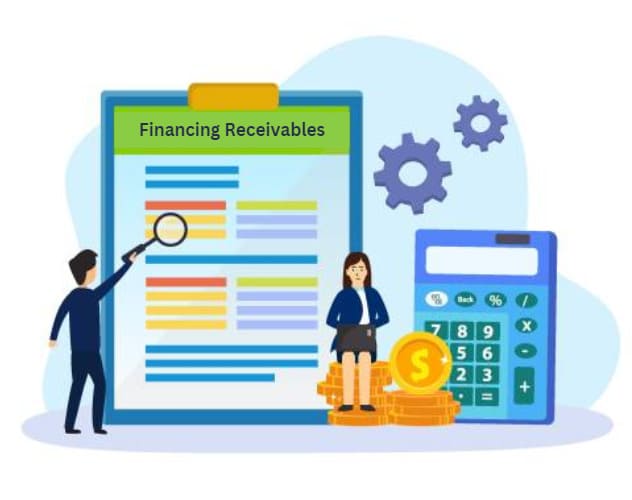
Accounts receivable financing is a different way to get money compared to going to a regular bank. Basically, it’s a money move where you borrow cash using the money your customers owe you.
Here’s the deal: if your company is waiting for money to come in, but you need cash ASAP to cover your bills, accounts receivable financing steps in to help. It’s also great for businesses that don’t want to hassle with collecting money from people who owe them. Instead, they can pay a little fee and get the money right away.
In simple terms, it’s like turning the future money you’re expecting into real cash when you need it!
Types of Financing Receivables
Here are different types of financing receivables options that you need to understand:
Collateralized Loan Option
- If you have customers who owe you money, you can use these accounts as collateral for a loan from a financing company.
- When your customers settle their bills, you can use that money to pay off the loan.
Invoice Factoring Option
- Another way is to sell your accounts receivable to a factoring company.
- With a service known as invoice factoring, the factoring company buys your non-delinquent unpaid invoices.
- They pay you an upfront percentage, called the advance rate, of what your customers owe.
- The factoring company then collects payments directly from your customers, and once the accounts receivable are paid, they keep a small factoring fee and give you the remaining balance.
Advantages of Financing Receivables
Understand some of the benefits of financing receivables to help you make a wiser and informed decision:
Upfront Cash for Unpaid Accounts: With receivables financing, you receive immediate funds for invoices that your customers haven’t paid yet. It’s like getting a cash advance based on the money you’re expecting to receive in the future.
Potentially Lower Financing Costs: The financing rate in receivables financing may be more cost-effective compared to other borrowing options such as traditional loans or lines of credit. This can be particularly beneficial for businesses looking to manage their costs while accessing the necessary funds.
Relief from Unpaid Bill Collection: Opting for receivables financing can lift the weight of chasing down unpaid bills from your shoulders. Instead of spending time and resources on collections, a financing company takes on this task. It allows your business to focus on its core activities while ensuring a steady flow of working capital.
Ideal for Cash Flow Challenges: Receivables financing is a great solution for businesses facing cash flow issues. Whether you’re waiting for payments from customers or need quick funds to cover operational expenses, this option provides a flexible and accessible way to address cash flow gaps. It’s suitable for a variety of companies, regardless of their size or industry, offering a lifeline during financially challenging periods.
Disadvantages of Financing Receivables
Understand some of the cons of financing receivables to help you make a wiser and informed decision:
Requirement of Outstanding Invoices: To benefit from receivable financing, your business must have outstanding invoices, meaning customers owe you money. This financial option leverages these accounts receivable as assets that can be used to secure a loan or sell to a factoring company.
Importance of Clear Terms for Unpaid Accounts: Keeping clear and accurate records of the terms associated with unpaid accounts is crucial. This includes documenting when payments are expected, the amounts owed, and any specific conditions. Maintaining meticulous records is essential for the smooth process of receivable financing, ensuring transparency and accuracy in the transactions.
Impact of Credit History on Qualification: Qualifying for receivable financing may depend on your business’s credit history. If your business lacks a stable credit history, it could pose a challenge in accessing this form of financing. Lenders or factoring companies often assess the creditworthiness of a business before extending receivable financing. Having a stable credit history enhances your eligibility and may lead to more favorable terms. It emphasizes the importance of maintaining good financial standing to maximize the benefits of receivable financing.
Vendor Financing:- What is Vendor Financing?
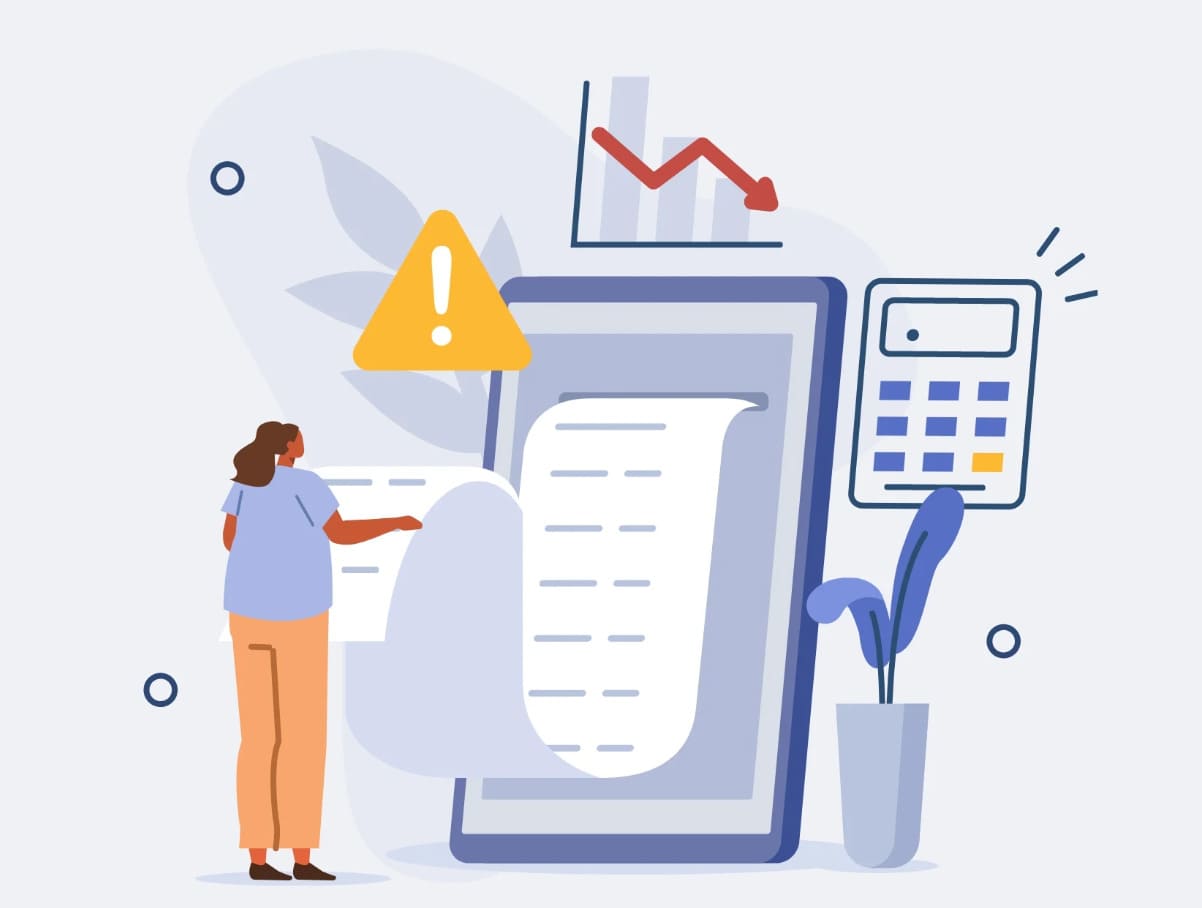
Vendor financing, also known as supplier financing or trade credit, is a financial arrangement where a company obtains funding or extended payment terms from its suppliers. In this scenario, the vendor, or the supplier of goods or services, plays a crucial role in providing financial support to the purchasing company.
It’s a smart move when you’re buying a lot of big stuff. If you’re getting things like inventory for a store, computers, vehicles, or machinery, talk to your suppliers about financing deals. It’s like making a deal to pay for these things over time instead of all at once. This helps you avoid running low on cash and gives you the chance to grow your business while paying for the equipment. It’s a win-win!
Also Read : What Is a Vendor? Definition, Types, and Example
Benefits of Vendor Financing
Understand some of the benefits of vendor financing to help you make a wiser and informed decision:
Equipment Purchase without Upfront Payment: One big advantage of vendor financing is that it lets you buy the equipment you need without having to pay for it all upfront. Instead of emptying your wallet in one go, you can work out a deal with your vendor to spread the cost over time. This means you can get essential equipment for your business without a hefty immediate expense.
Preservation of Cash for Emergencies: By using vendor financing, you’re able to keep more cash on hand. This is crucial for dealing with unexpected emergencies or opportunities that may come up in your business journey. Preserving your cash flow provides a financial safety net, allowing you to handle unforeseen challenges without disrupting your day-to-day operations or long-term plans.
Also Read: How to Use Vendor Financing to Buy a Business?
Disadvantages of Vendor Financing
Understand some of the cons of financing receivables to help you make a wiser and informed decision:
Extended Payment Period: One downside of vendor financing is that your payments might stretch out over a long period. While this eases the immediate financial burden, it could mean you’re committed to paying for the equipment over an extended timeframe. This extended payment period may limit your financial flexibility and tie up resources that could be used for other business needs.
Risk of Equipment Retrieval: If you fall behind on your payments, there’s a risk that the vendor could take back the equipment. This is a significant concern because it means not keeping up with your agreed-upon payment schedule could result in losing the very equipment your business relies on. It emphasizes the importance of carefully managing your financial commitments to avoid potential disruptions to your operations.
Distinguishing Accounts Receivables Finance from Accounts Receivable Factoring
Navigating the world of turning accounts receivables into immediate cash flow can be a game-changer for businesses in need of quick funds. While both services share the common goal of providing timely financial solutions, it’s essential to understand their fundamental differences:
Nature of the Transactions
Accounts Receivables Finance (Invoice Financing)
Think of this as a loan. Your business uses its outstanding invoices as collateral to secure a loan. It’s a financial arrangement where you borrow against the money your customers owe you, providing a flexible solution to bridge financial gaps.
Accounts Receivable Factoring
In contrast, factoring involves the outright sale of your receivables. Factoring companies become the owners of the current asset – your unpaid invoices. They pay you a portion upfront (known as the advance), and then they collect the full amount directly from your customers.
Roles of the Service Providers
Factoring Companies
Factoring companies act as buyers of a business’s current assets, taking ownership of the accounts receivable. They assume the responsibility of collecting payments from your customers.
Accounts Receivable Financing Companies
On the other hand, companies providing accounts receivable financing act as financiers or lenders. They extend a loan to your business, using the outstanding invoices as collateral, without taking ownership of the receivables.
Scope of Application
Accounts Receivable Factoring
Factoring is specifically tailored for commercial financing. It is a solution designed for businesses looking to optimize their cash flow by selling their unpaid invoices in commercial transactions.
Final Words
In the world of business, managing finances wisely is the key to success. Whether it’s unlocking cash through accounts receivables financing or securing equipment with vendor financing, these financial tools offer both opportunities and considerations. Accounts receivables financing turns future money into immediate cash, ideal for addressing cash flow challenges.
Vendor financing, on the other hand, lets you spread the cost of essential equipment, preserving cash for emergencies. While each has its advantages, it’s crucial to weigh the pros and cons. Whether you’re considering accounts receivables financing or vendor financing, understanding these financial strategies empowers you to make informed decisions, propelling your business toward sustained growth and financial resilience.
Credlix is becoming a big player in helping businesses with money. We want to make small businesses stronger, so we offer really good financing solutions made just for them.
Also Read : What Is a Vendor? Definition, Types, and Example

